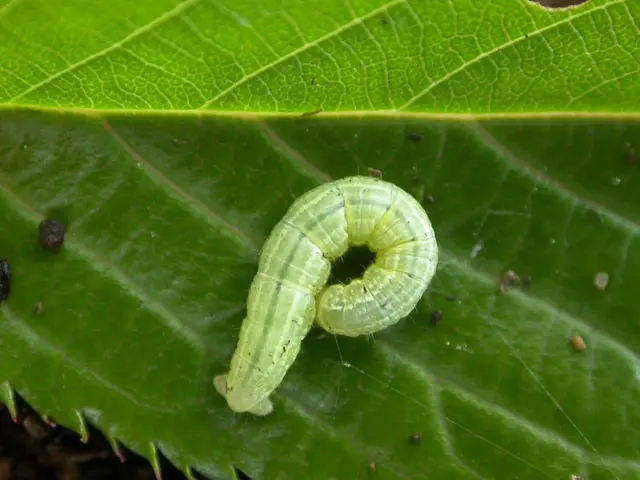Head Lice Infestations on the Rise in MV: Busting Myths and Taking Action
Expanding prevalence of lice issues reported within MV community - Surge in Cases of Head Lice Observed in MV Community
Head lice are giving parents and health insurers a collective itch in Mecklenburg-Vorpommern, with estimates by Barmer health insurance company indicating a consistent increase in lice cases. This alarming trend is demonstrated by the rising number of prescriptions for lice medication among children insured by Barmer. In 2023 alone, there were 807 prescriptions for lice treatment, marking a 50% surge compared to 2021.
As per the first three quarters of 2024, this upward trend continues, as reported by Barmer in Schwerin. Other statutory health insurers have reported similar developments. Being one of the largest health insurance companies, Barmer insures approximately 265,000 individuals in Mecklenburg-Vorpommern. As their data is anonymized for analysis, it's presumed that the actual number of affected individuals might be substantially higher, given the number of lice medications obtained without a prescription.
Though head lice are generally harmless, early intervention is crucial to prevent skin infections and further transmission. Henning Kutzbach, the regional manager of Barmer, advises immediate treatment when an infestation is detected. He also clarifies that lice are not associated with uncleanliness but are more attracted to the warmth of the scalp. Close human contact facilitates their spread, especially in kindergartens, primary schools, and after-school care facilities. Therefore, parents are encouraged to inspect their children for head lice whenever these facilities report a lice infestation.
Lice are not attracted to dirt or poor hygiene, and they cannot be transmitted from pets. Quarantine is only necessary for a child who has been found to have head lice when there's no longer a risk of further transmission. Parents should immediately inform their child's school or daycare facility if they discover an infestation, as per the Infection Protection Act.
To combat and prevent head lice infestations, children should avoid head-to-head contact and sharing personal items such as hair accessories, hats, or brushes. Regular checks should be carried out, and hair can be styled in buns or braids to minimize contact opportunities for lice. Treatment can be managed through over-the-counter or prescription shampoos, lotions, or creams, with manual removal methods if necessary. A combination of treatments and non-toxic products may be required to overcome resistance. Environmental management, such as washing bedding, clothing, and personal items in hot water, further minimizes the risk of reinfestation.
- Community policy should be established to address the rising issue of head lice infestations in Mecklenburg-Vorpommern, as the numbers continue to surge.
- Vocational training programs can be implemented to educate individuals on head lice prevention and treatment methods.
- Insurers like Barmer are seeing an increase in prescriptions for lice medication, indicating a need for comprehensive information about head lice.
- The Ministry of Health and Social Affairs could consider vocational training as part of their community policy to help parents and guardians deal with head lice infestations.
- With the number of prescriptions for lice treatment skyrocketing, it's crucial to analyze reasons for this trend and develop strategies to curb it.
- In light of the increasing prevalence of head lice in schools and daycare facilities, science and research should focus on creating more effective lice treatments.
- Vocational training can also equip individuals with the skills necessary to provide workplace-wellness programs focused on preventing and managing head lice.
- Healthcare providers should be encouraged to offer tailored medical-conditions education, including information on head lice, chronic diseases, and respiratory conditions.
- As part of their community policy, local governments could collaborate with schools to implement regular screenings for head lice, especially during outbreaks.
- Vocational training courses on head lice could be included in the curriculum of nursing and healthcare programs to equip professionals with the knowledge needed to help those affected.
- Chronic diseases, such as chronic kidney disease, COPD, type-2 diabetes, and cancer, can deter the immune system, increasing the risk of complications from head lice infestations.
- Schools should consider incorporating health and wellness programs that focus on digestive health, eye-health, hearing, and fitness and exercise to promote overall student well-being and resilience against diseases, including head lice.
- Community centers can offer workshops on head lice prevention and treatment, targeting parents, educators, and children, as part of their health- and wellness initiatives.
- Alzheimers disease, autoimmune disorders, mental health, skin care, therapies, and treatments, and nutrition are other areas where vocational training programs can help create a healthier community.
- Multiple sclerosis, migraine, cardiovascular health, psoriasis, rheumatoid arthritis, neurological disorders, and breast cancer are conditions that require specialized attention, and vocational training can help communities address these complex issues.
- Vocational training can also extend to alternative remedies, such as CBD oil, which may have potential benefits for managing head lice infestations and other health concerns.
- Public awareness campaigns on head lice prevention and treatment can be reinforced through partnerships with community organizations and media outlets, ensuring that everyone understands their role in keeping the community healthy and lice-free.








